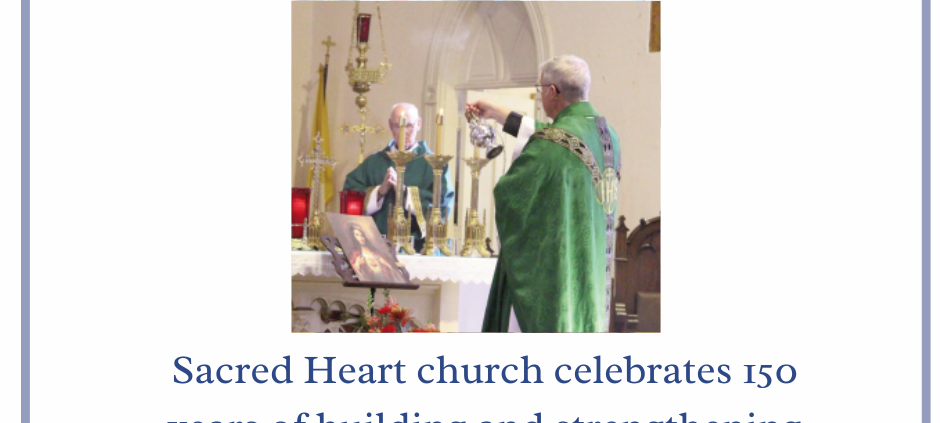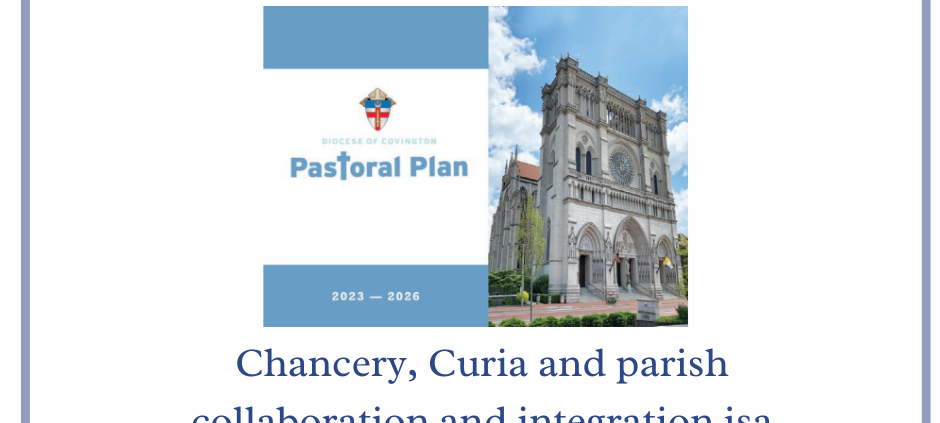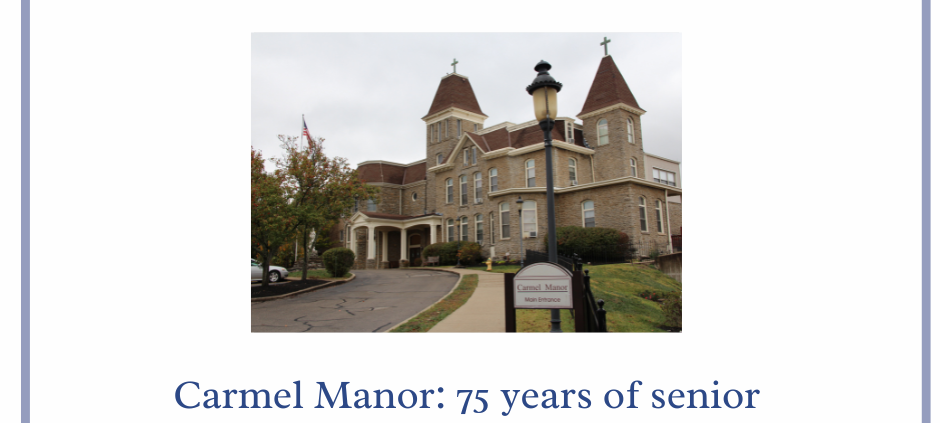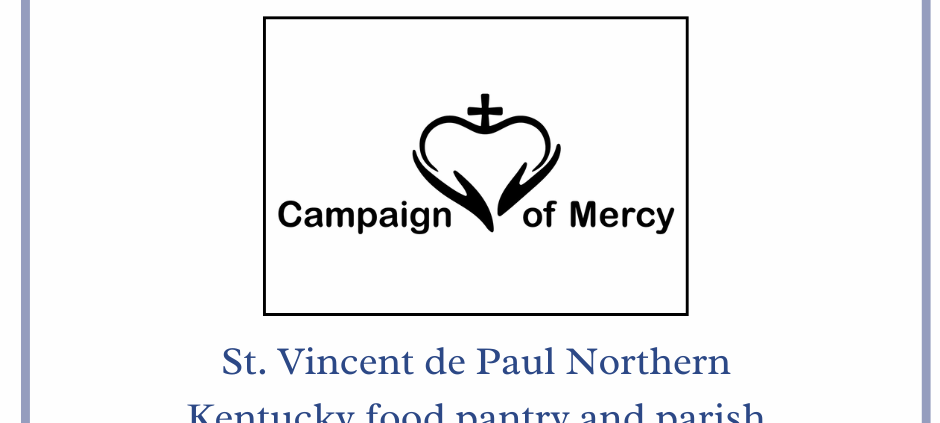Laura Keener
Editor
Three-hundred and fifty years (1674) ago, in Paray-le-Monial, France, Jesus reveals devotions to His Sacred Heart to visionary Visitation Sister Margaret Mary Alacoque. Two-hundred years later (1874), in Bellevue, Kentucky, a church is established and dedicated under the patronage of the Sacred Heart of Jesus. In October 2024, Pope Francis writes his fourth encyclical, “Dilexit Nos,” (On the Human and Divine Love of the Heart of Jesus Christ),” calling for a rededication to the Sacred Heart of Jesus.
Like a night time constellation spanning the constraints of time, Father Martin Pitstick, pastor, connected these seemingly random historic and current events as a guide for parishioners, encouraging devotion to the Sacred Heart of Jesus and, ultimately, eternal life with Him in heaven.
“Many generations have sacrificed so that the love of the Sacred Heart of Jesus might be known in this town. Many generations of parishioners have prayed in this church. They have come and they have gone,” Father Pitstick said in his homily. “A million years from today, this church will be dust. But the immortal souls of those who built it and who have prayed in it will remain forever in one of two places.”
Parishioners of Divine Mercy Parish, Bellevue, gathered Nov. 17 to celebrate the 150th anniversary of the dedication of its church building, Sacred Heart Church. The celebration began with Mass, which was broadcast live on Sacred Heart Radio and live streamed on the parish website, and included a Eucharistic procession from the church, around the school buildings and back to the church for Benediction.
“The message for us today is that, even in the midst of tribulation, we need not fear. The Lord himself is with us, and he is our inheritance. This is the same message that Jesus gave Sister Margaret Mary Alacoque about the love of his Sacred Heart,” Father Pitstick said.
“The Sacred Heart of Jesus is a door open wide, and Jesus is inviting me and you to come into his heart, to take refuge and to receive all of the treasures and graces and mercy and forgiveness that you long for,” he said.
In an interview the week before the sesquicentennial celebration, Father Pitstick shared that the parish is in the middle of a three-phase major restoration of Sacred Heart Church. Phase 1 was a $1.1 million restoration of the exterior of the church — repairing and replacing the roof and the copper bell tower. The parish has raised another $600,000 to begin the interior restoration. A third phase will add an elevator from the main church to the restrooms and undercroft making the entire church handicap accessible.
“It’s taking longer than I would have liked because there’s a lot of choices of colors and designs,” said Father Pitstick, mentioning that he has contracted with a company that specializes in sacred architecture and is working with the diocesan Office of Worship, “to make a beautiful interior restoration with a nice marble sanctuary and good lighting.”
The interior restoration will also include fixing water damage and painting the ceiling and walls.
Aside from improvements to the physical church, Father Pitstick is equally, if not more, excited to talk about “the things that we’ve been doing in the parish,” things that are building up God’s church — the people.
In May, Father Pitstick led 20 people, including some parishioners, on a pilgrimage to Lourdes. There they had a powerful spiritual experience during a rosary procession. Inspired by the experience, Father Pitstick and the pilgrims held a one-hour rosary procession around the city of Bellevue.
“We alternated the rosary and Marian hymns and prayers. It was nice,” said Father Pitstick.
Father Pitstick said that for many years the parish was trying, without success, to develop a strong youth ministry. About five years ago, he was approached by Brad Torline, former associate director for the diocesan Office of Catechesis and Evangelization and now executive director of the Angelico Project, to begin a Young Adult ministry instead.
“It’s better to start with the young adults because, after you get that as an anchor, then you can go in both directions,” said Father Pitstick. As the young adults age out of young adult ministry, the idea is that many will continue as active parishioners and those that marry and have children of their own, would instinctively want some kind of similar youth ministry for their children. So far, with the foundation laid by Mr. Torline and for the last several years coordinated by Nick Thorvaldsen, Young Adult Ministry is thriving at Divine Mercy Parish.
“We’ve used the win, build and send model,” said Father Pitstick. Win, Build, Send is a popular model used by college evangelization ministries like FOCUS. “You have some big events that are fun — that’s win,” said Father Pitstick mentioning their annual river boat swing dance cruise, which typically draws over 100 young adults.
Build incorporates catechetical events, like Bible study or prayer events. Send involves going out on mission — sharing your spiritual journey, serving others and bringing others to Christ. The Young Adult group is currently planning for a mission trip to the Dominican Republic with Mustard Seed Communities, a trip inspired after Bishop John Iffert’s visit to the Mustard Seed Communities in Jamaica earlier this year.
“Go to the website and see all the stuff that’s going on, go to the Instagram page or the Facebook page … they’re always doing something,” said Father Pitstick.
Additionally, the parish recently reactived its Knights of Columbus Council 702, one of the original councils in Kentucky. Also, for the spiritual and missionary development of parishioners, the parish has begun offering That Man Is You, for its men members, and Walking With Purpose for women. And they started a new initiative for young families to get together socially for some faith-based activities, like the upcoming Advent wreath making event. The parish also has an active St. Vincent de Paul conference.
Father Pitstick is also pastor of neighboring St. Bernard Parish in Dayton. He said that between the two parishes there are less than 500 registered households. But their small size doesn’t diminish the desire to do more and more for each other, the community and ultimately the Lord.
“It’s hard to find these resources, so I’ve really stepped out in faith and stretched. We have a lot of staff, and the staff is fueling these things,” said Father Pitstick. “It puts pressure on me to raise the money to do all these things, but it’s bearing fruit and so far we haven’t collapsed financially. It seems like we’re moving forward bit by bit.”








